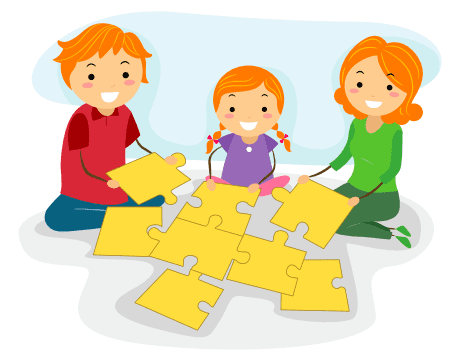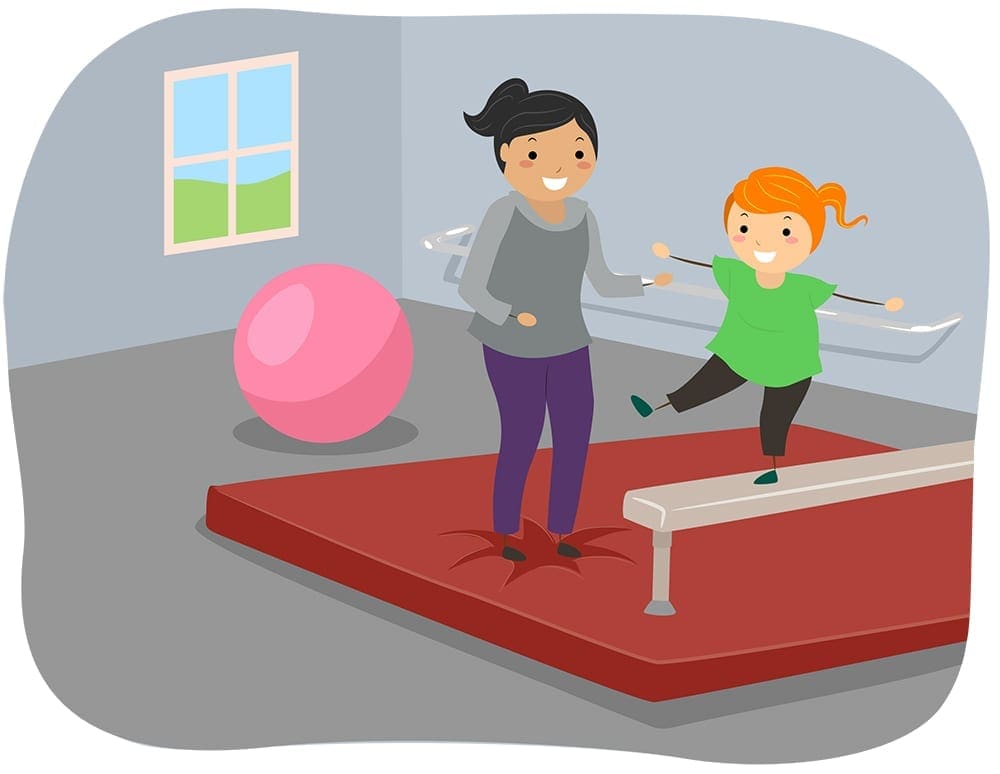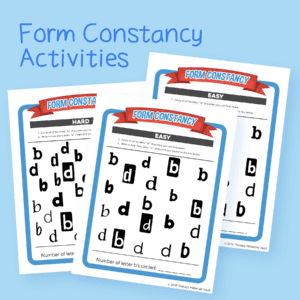Visual Perceptual skills involve the brain’s ability to interpret and organize the information that is seen through our eyes. Visual perceptual skills are important as they help us complete many daily activities and routines such as finding our socks in the drawer, shoe tying, knowing the difference between similar foods, and so much more. For school aged kids these skills are imperative so they can perform academically. Visual perceptual skills are important for reading, writing, cutting, drawing, completing math problems, puzzles, etc. If a child has difficulty with visual perceptual skills, they may struggle with everyday tasks impacting their independence and daily functioning.

What are the Different Types of Visual Perceptual Skills?
There are seven visual perceptual skills which are listed below with a brief description:
- Visual Memory – this skill allows a person to retrieve, store, and recall visual information that they see.
- Visual Sequential Memory – this skill involves a person’s ability to remember visual details in the correct sequence which is important for reading and spelling.
- Visual Form Constancy – the visual skill that allows a person to recognize an object even within different environments, when it has different characteristics, or from different angles. (i.e. identify letters when in different colors or fonts)
- Visual Figure Ground – this skill allows a person to focus and find an object within a busy environment.
- Visual Spatial Relations – this skill includes a person’s ability to process the visual environment in relation to themselves.
- Visual Closure – the skill allows a person to perceive and identify an object, picture, or word even when part of it is hidden.
- Visual Discrimination – this skill involves seeing subtle differences between objects/pictures and paying attention to details.
What activities can improve visual perception?
Below are a few ideas for activities for each visual perceptual skill:
- Visual Memory
- Play Memory
- Play Concentration
- Visual Sequential Memory
- Recall games – lay out pictures or objects and have your child look at them for a few seconds. Then, they have to tell you the correct order of the pictures or objects. Next, you can mix them up and have them try to re-order them correctly.
- Visual Form Constancy
- Tangrams
- Sorting activities (i.e. have a child sort by a certain color, shape, size, or texture)
- Ispy (i.e. find all the square shaped objects in the room)
- Visual Figure Ground
- Use “find the hidden pictures” worksheets
- “Where’s Waldo” books
- “Spot the Differences” worksheets
- Visual Spatial Relations
- Crawling under, over, and through objects without touching them
- Completing obstacle courses
- Locating objects in relation to oneself (i.e. find the ball “behind” you)
- Imitating static body positions
- Visual Closure
- Hide part of a picture, shape, or object and have the child try to identify what it is
- Jig-saw puzzles
- Visual Discrimination
- Play “Spot It”
- Sort objects/pictures by similarities (i.e. color, shape, etc)
- Have children “spot the odd one out” – gather similar objects and have 1 that is different. Then have the child identify the one that is different
- Matching activities – matching socks in the laundry, utensils, picture cards, etc.
For worksheet resources addressing these visual perceptual skills, click here!
Visual Perceptual Skills impact everything we do and difficulty in this area can make everyday tasks challenging and frustrating. If you think your child is having difficulty with their visual perceptual skills, contact Chicago Occupational Therapy at (773) 980-0300 to learn more about our services and how we can help your child flourish and grow.


